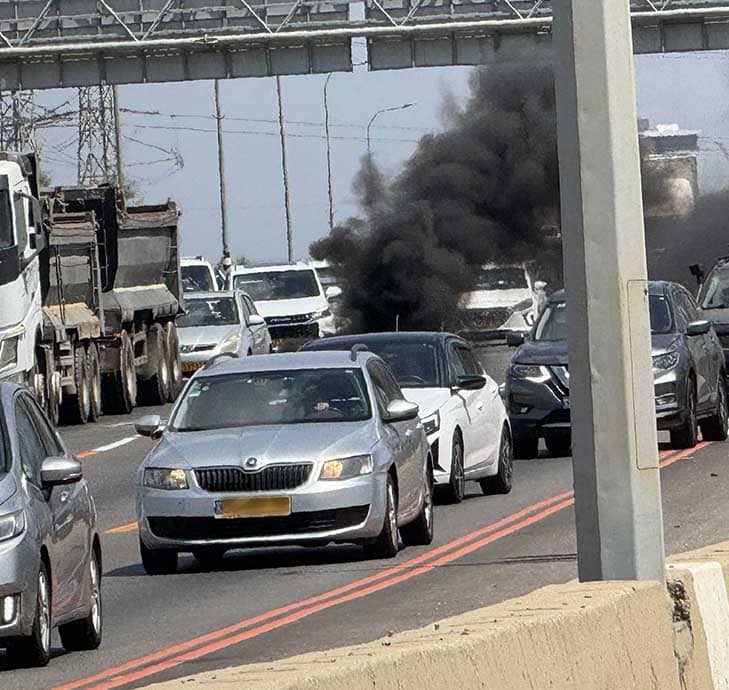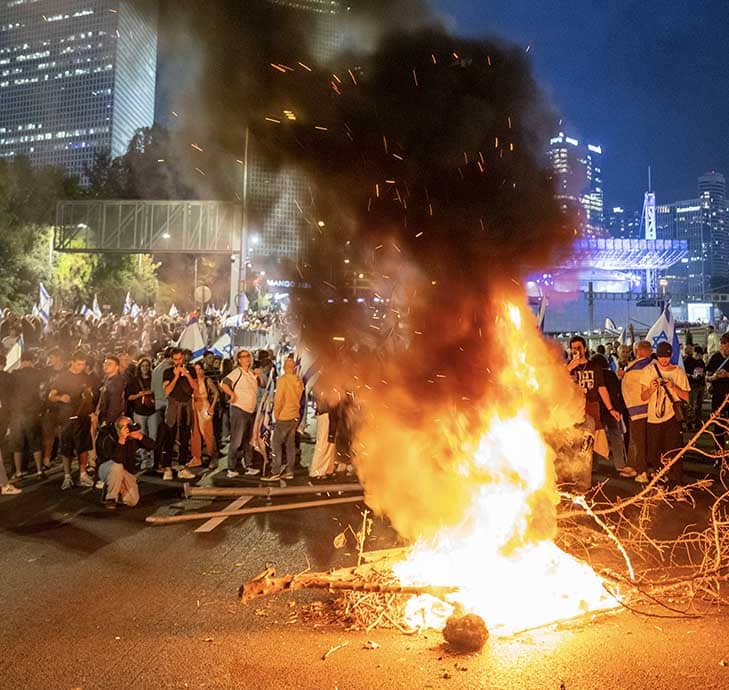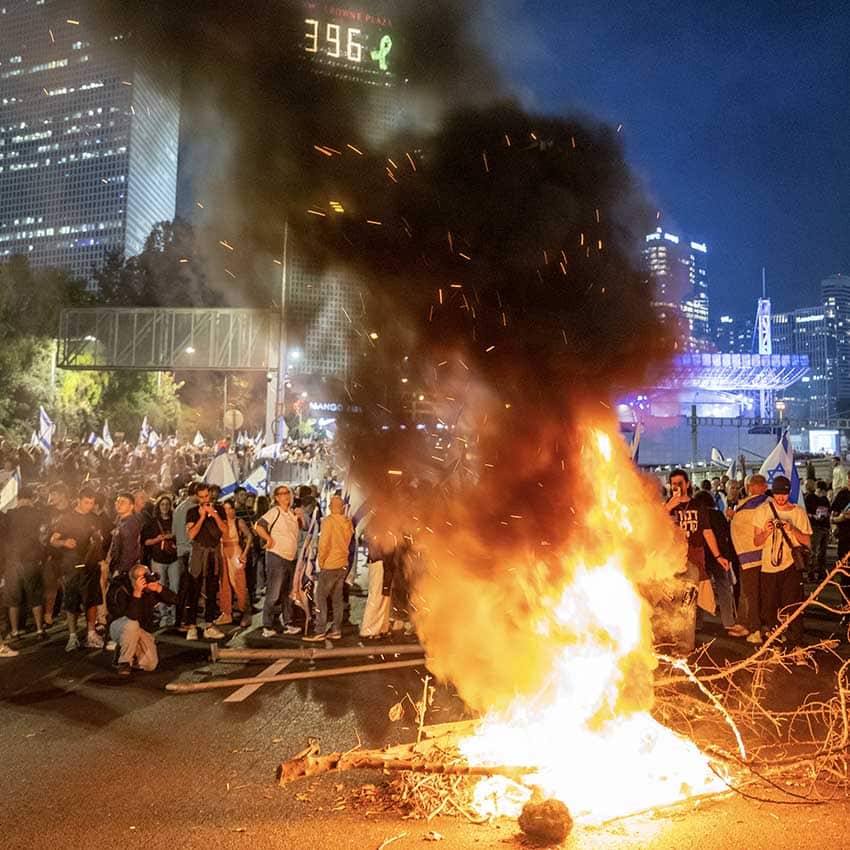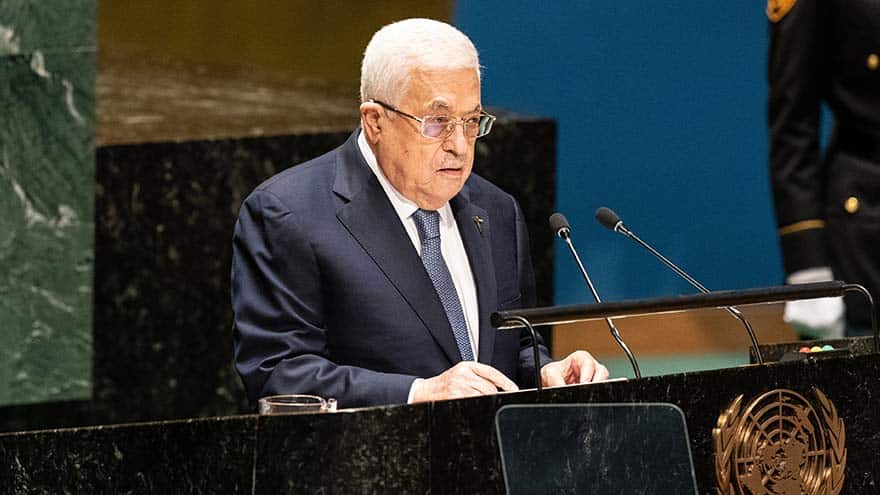A provocative act of protest—pouring red paint outside the IDF Chief of Staff’s residence, “Days of Rage,” “Days of Pause,” and roadblocks from north to south—suggests that the nature of the demonstrations, whether by those protesting for the hostages, against the government, or calling for an end to the war, as well as by ultra-Orthodox groups decrying any attempt to draft them into the army, is perceived by many as a crossing of red lines.
These roadblocks not only cause massive traffic jams and frustration among millions of Israelis but also cultivate a sense of “anything goes,” illustrating the breakdown of democratic norms. The government, police, attorney general, and judiciary must wake up before these protests drag the country into chaos.
The pouring of red paint outside the Chief of Staff’s home by activists for the hostages—an outrageous and incomprehensible act—followed a protest outside the Air Force Commander’s house and accusations by Haaretz’s publisher that the Central Command Chief is a “war criminal.” Add to that the reckless roadblocks, ultra-Orthodox demonstrators shouting “Nazis” in protest over draft orders and the arrest of deserters, and the violent attack by “hilltop youth” and others on an IDF base in Samaria—damaging security equipment—and it becomes clear why many Israelis are alarmed that the country is marching rapidly toward anarchy, if not already mired in it.
Even those who would argue that “anarchy” is too strong a term would likely agree that many lines have been crossed, that the state is struggling to protect its citizens, and that law enforcement’s helplessness has become routine.
The image of protesters pouring red paint outside the home of the IDF’s highest-ranking officer is no longer a symbolic protest or mere provocation—it is an expression of deep societal rupture, of disrespect, of the loss of boundaries, and of a tangible threat to national cohesion. And this is particularly dangerous because such incidents, left unchecked by the police and law enforcement, convey an implicit message: “anything goes in the name of protest and free expression.” The more extreme events pass without meaningful response from the police, the stronger this message becomes in the public’s mind.
In the same breath, is it any wonder that a leading ultra-Orthodox figure warned before the holidays that if draft dodgers were not allowed to travel to Uman and New York, their peers would block the airport and prevent others from leaving the country?
Protest and Let Live
The right to protest is one of the cornerstones of any democracy. Without it, a free society cannot exist. Yet even this right must remain within the bounds of public order. When a protest blocks vital transport arteries, spills into property damage, threatens leaders or security officials—or worse, incites violence—it crosses the fine line between legitimate protest and the undermining of democratic governance.
In Israel’s current reality, that line appears increasingly blurred. The protesters for the hostages are desperate to make their cry heard by the government. Yet, the use of provocative or violent methods, as well as the politicization of their sacred cause, erodes the moral foundation of their struggle. Likewise, the ultra-Orthodox protests against the draft challenge the essence of the right to protest, blatantly disregarding the law and deliberately paralyzing the daily lives of hundreds of thousands of citizens—all while hurling insults at uniformed soldiers, calling them “Nazis,” “Who are you?” and similar slurs.
Let there be no doubt: I support freedom of speech, opinion, and protest, and I believe that demonstrations are legitimate. It is not only possible but necessary to criticize government decisions and actions—even those of a democratically elected government—as long as such criticism respects not only democratic principles but also the basic rule of “protest and let live,” without descending into hatred and violence.

The Loss of Public Sovereignty
When different groups in society choose a strategy of blockades, violence, and provocations—when the intent from the outset is disruption, regardless of the cause—and the police allow it, the message is clear and destructive: the state no longer holds a monopoly over public order. This is a clear sign of a slide toward anarchy, where each group takes the law into its own hands, prioritizing its own opinions and demands over the collective good—at any cost.
In functioning democracies, such a situation is recognized as a slippery slope that can lead to the collapse of the government if the state cannot impose order, if the police fail to enforce the law, and if citizens feel that the streets are controlled by whoever is stronger or louder, the entire system’s legitimacy crumbles.
When boundaries blur, a firm and clear hand from the authorities is essential. The police—already struggling for years with increasingly aggressive waves of protest—must enforce the law consistently and equally. It is unacceptable that ultra-Orthodox demonstrators block roads for hours and clash violently with police without consequence, just as it is unreasonable to ignite tires and block—whether for five minutes or an hour—Highway 4, Begin Road near the Kirya, or the Ayalon routes.
This is also a test of national leadership. The government must send a unified and unequivocal message: protest is a right, anarchy is a danger. Any violation of public order—whether from the right or the left, from secular or religious sectors—must be met with an immediate and decisive response.
It’s Time to Set Boundaries
One of the central questions concerns why, in the past three years, the right to protest has consistently outweighed the public’s right to live everyday lives—without roadblocks, “days of rage,” or traffic paralysis.
The courts and the Attorney General base this on a core democratic principle: the right to protest is a supreme right, an almost unique tool in the hands of citizens against the power of the state. Therefore, case law has ruled that temporary disruptions to public order, such as traffic delays, are tolerable so long as they are proportionate. But for the past three years, the disruptions have been neither temporary nor proportionate—they have become total and ever-worsening.
Why, then, have the Attorney General and the Supreme Court failed to respond to this growing snowball since those early rulings? Do they not see that prolonged roadblocks cause massive traffic jams, delay ambulances en route to hospitals, prevent soldiers from reaching their bases, keep workers (including doctors and nurses) from their jobs, and stop citizens from attending events or even returning home? Why is a situation that poses health risks and economic damage—both to individuals and the national economy—still considered a “legitimate protest” rather than a serious violation of the public’s rights?
The absence of corrective measures and clear boundaries between freedom of expression and the “freedom to disrupt” has created a paradox: many citizens feel that the state is failing them, prioritizing the protesters’ right to cause deliberate disruption over their own fundamental right to live everyday, free lives. This sentiment, in turn, erodes public trust in the judiciary, in the rule of law, and in the state as a sovereign authority.
Instead of drawing firm lines between legitimate protest and street anarchy, and empowering the police to defend citizens first and foremost, the Attorney General and the courts appear to leave vast room for continued disruption—not only of daily life but of democracy itself.
The ongoing result is an abuse of the rights to free expression and protest, to the point that life itself—the functioning of the economy, public health, civil routine—has become a hostage to protest, accompanied by constant uncertainty over the question: “Is today another day to stay home?”
And of course, these events cannot be separated from the broader context: Israel is in the midst of a prolonged war; dozens of hostages remain in Gaza; society as a whole is in a deep crisis of trust with its leadership. Pain, frustration, and disillusionment with the political system spill into the streets. The protests reflect genuine despair—but they also expose the danger embedded within it.
At such a time, the responsibility of leaders, legislators, the judiciary, and security officials is twofold: to calm the streets, to foster respectful public discourse, and, above all, to safeguard the boundaries of democratic conduct.

Civic Responsibility, on the Edge of the Abyss
The sense that we are standing on the brink of anarchy is not merely a literary image. When Israeli citizens see, day after day, wild roadblocks, riots near private homes, hateful graffiti defaming leaders and security officials, red paint on walls, and paralyzed traffic, they do not only ask, “Who is protecting us? Where is the state?”—They are also profoundly alarmed, wondering where all this is heading.
And when the public loses faith that the system of law and order is capable of protecting it, a process of internal disintegration may begin—one that risks being accompanied by an escalation in violence.
The responsibility for resolving this situation does not rest solely with the government or with law enforcement. Citizens themselves, as well as protest and party leaders, must also ask and examine: Is our struggle just enough to justify harming our neighbors, parents on their way to work, an ambulance trying to pass, or a soldier or commander heading to a shift? Does the end truly justify all means? Protest can be determined, creative, and even fierce—without descending into anarchy. Israeli history is filled with examples of demonstrations that managed to influence and change reality without undermining the state’s stability.
The incidents I have mentioned join many others, and together they form warning signs. These are not isolated cases but part of a dangerous pattern that has become a persistent phenomenon—one that threatens Israel’s very ability to function as a democratic state.
This is the moment when the government, the police, the judicial and law enforcement systems, as well as the public and its leaders, must awaken: to draw clear boundaries, to enforce the law equally, to understand that taking the law into one’s own hands is dangerous—and above all, to recognize that anarchy is an existential threat to our society. In these challenging times, especially when we are faced with external threats, we must not let ourselves crumble from within.








